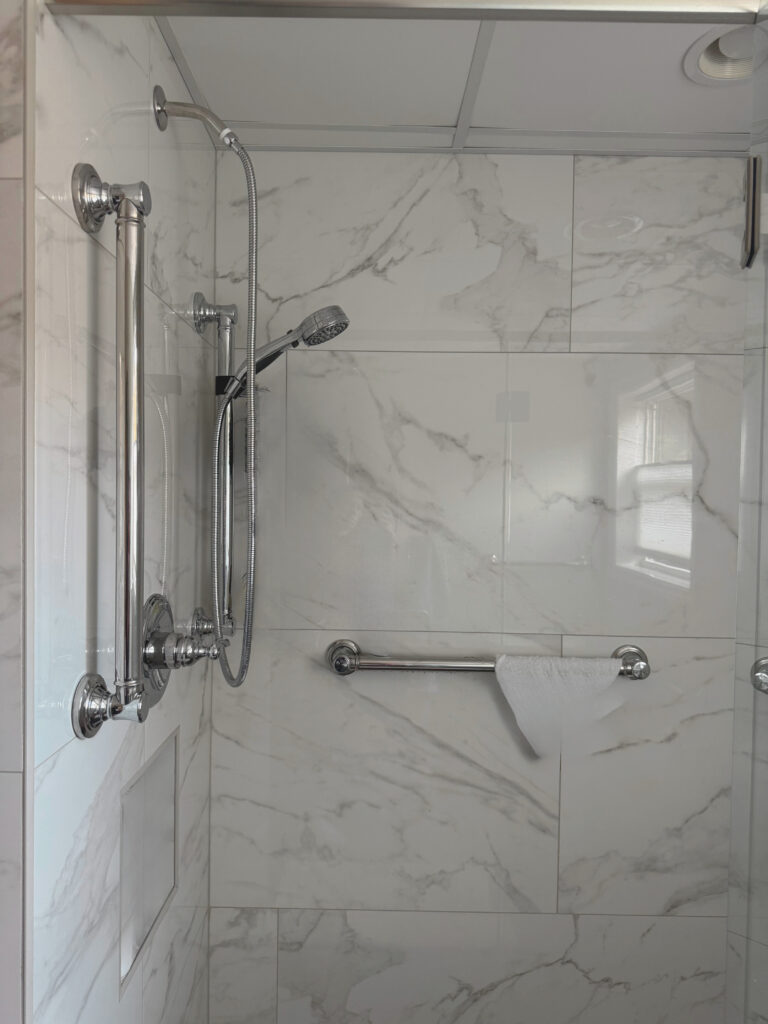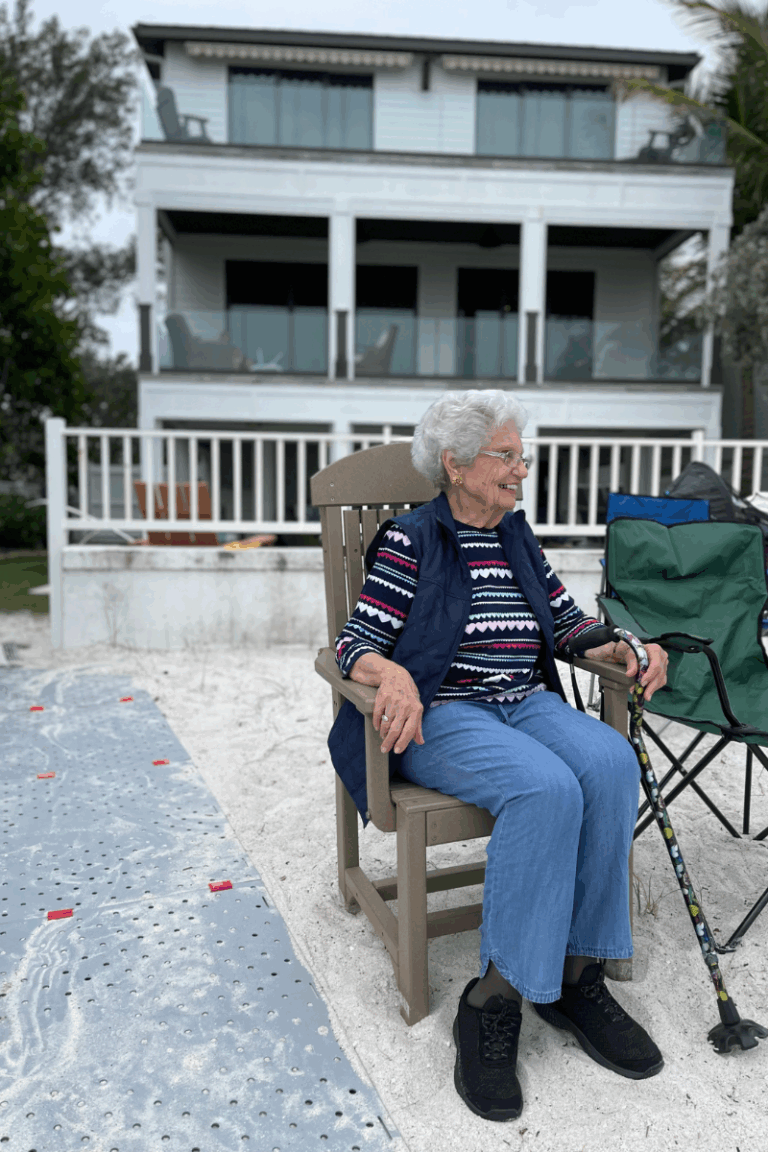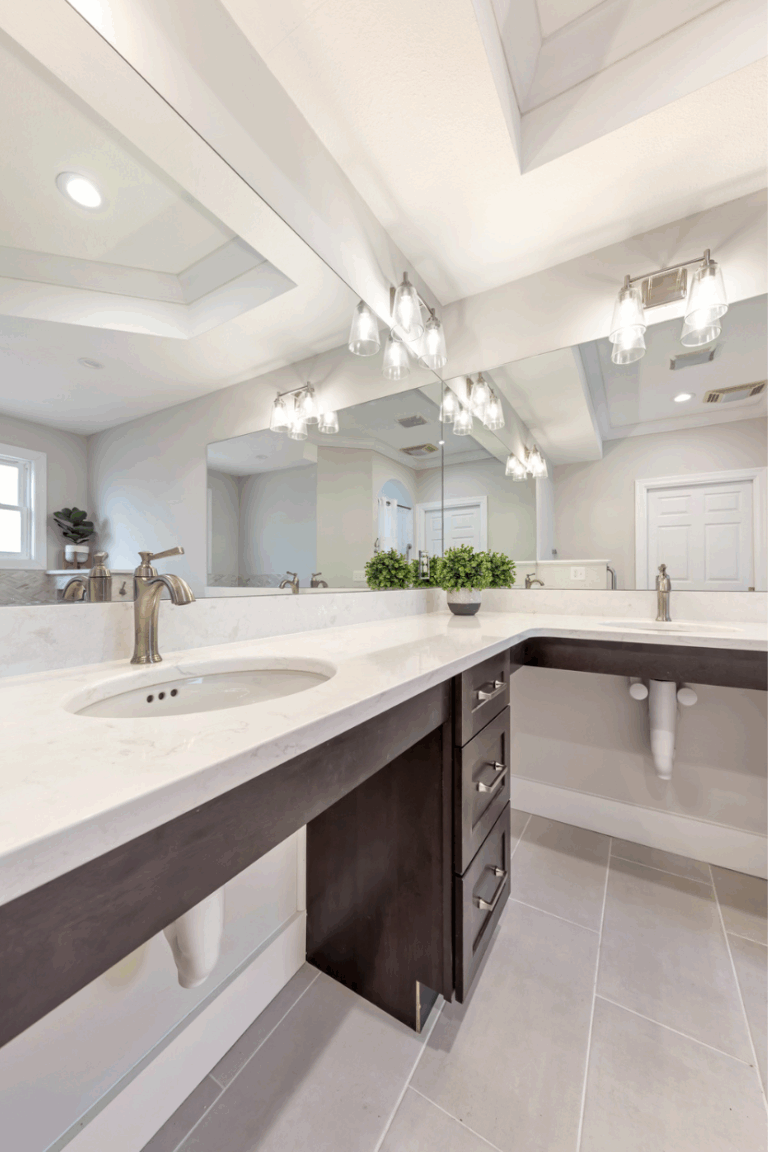As a nerdy occupational therapist, I love diving into the nitty-gritty details of accessible design. Safety comes first, followed by independence—with a splash of joy in the process. I’m all about showstopper grab bars and products that are tested and designed to improve function. But when it comes to ADA-compliant products, not everything with an ADA stamp is what it seems.
Let’s break down one of the biggest bathroom safety misconceptions: the shower slide bar with a removable showerhead.
ADA-Compliant? Not So Fast…
When we see an ADA stamp on a product, we assume it meets safety and accessibility standards. But here’s the catch: not all ADA-labeled products are designed to improve function and safety for all.
Key Facts About ADA and Residential Homes:
- Commercial vs. Residential: ADA compliance is meeting the minimal requirement and standards by law for public and commercial spaces—but not for private homes.
- Product-Specific Criteria: Many products, like appliances, tiles, and fixtures, must meet specific ADA standards and codes for usability, but that doesn’t always mean they’re designed for safety, weight-bearing support, or enhance functional use.
- Final Selection Is Personal: In residential design, product choices ultimately come down to the user (client preferences), not mandatory regulations.
The Universal Benefits of a Shower Slide Bar with a Removable Showerhead:
While not a grab bar, a shower slide bar offers great adjustability and convenience, making it a popular choice for all ages:
- Adjustable Height: Perfect for seated users, children, or taller individuals.
- Flexible Use: Ideal for rinsing without getting hair wet, great for limited mobility or post-surgery recovery, and even rinsing the shower while cleaning.
- Ease of Use: Keeps the handheld showerhead within easy reach while seated or standing.
Pro Tips for Shopping & Installing a Shower Slide Bar
1) Follow the Manufacturer’s Guidelines – Every product comes with installation instructions for a reason!
2) Install on a Stud or Blocking – Just like towel hooks, unsecured installations loosen over time. Proper mounting ensures durability.
3) A Slide Bar is NOT a Grab Bar (unless specified as both) – When people lose balance, they instinctively grab whatever is nearby—often a towel bar or slide bar. But most slide bars aren’t reinforced to hold weight. They’re typically secured with just one screw per mount, meaning they won’t support 250+ lbs like a proper grab bar. In addition, the diameter does not meet the 1-1/4” for a full, firm grip.
4) Look for a “Slide Bar/Grab Bar” Label – Some products function as both a vertical grab bar and a shower slide bar. These are specifically designed and tested to support weight.
5) Install Blocking or Backing – For maximum flexibility in grab bar placement, install blocking (reinforced boards between studs) behind the wall. This ensures both ends of the bar are properly secured.
Check ADA Grab Bar Standards – A true ADA-compliant grab bar must:
• Have a 1.25–1.5” diameter for a secure grip.
• Be mounted with at least three screws at each end.
• Support at least 250 lbs of force.
Don’t Be Fooled by the ADA stamp
Here’s an example of a shower slide bar that carries the ADA stamp and “meets” other codes and regulations. The mechanism allows the shower head to be adjusted single-handed, but the bar alone does not meet ADA safety standards.
Here’s an example of a slide bar that doubles as a grab bar, designed for function, safety, and stability.
🔹 Delta Universal Shower Slide / Grab Bar
Shower Smart!
Not all ADA-labeled products are safe for weight-bearing and functional use. Before you grab that bar, know what you’re buying and make sure it’s installed properly.
Want to learn more about safe and stylish accessible design? Follow Blue Day 2 for practical tips, expert insights, and real-life solutions to make your home more functional and joyful!
Find more details about ADA design standards HERE.
Need help installing your grab bar? Check out the brief video by EquipMeOT for best practices on installation.







